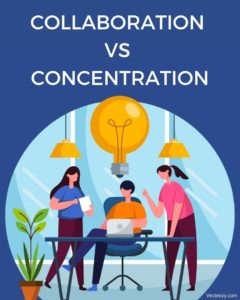Over the past hundred years or so we’ve pretty much settled on a recognised five day work week, starting nominally on Monday at 9am and ending on Friday at 5pm or thereabouts. Some commentators are of the opinion that productivity will not be damaged (and may indeed improve) if we move to a four day work week; there are more and more studies being carried out to gauge opinion on the subject and also to get real data from those organisations that have implemented a shorter working week (a recent report [1] by the Henley Business School states that 64% of companies who have moved to a four day week have seen improvements in staff productivity). Certainly, the New Zealand study reported in the Guardian [2] in 2019 reported a reduction in stress, a better work-life balance as well as an increase in productivity.
Thinking about the practicalities of the four day work week there is a rather naïve vision of every member of staff working the same four days and then having a three day weekend.
“I’ll call you back on Monday as I’m not working tomorrow.”
“Is there a colleague who might be able to help tomorrow?”
“Sorry, none of us work on a Friday.”
This would not be a problem, of course, if everyone suddenly decided that Thursday was the new Friday. It’s difficult to see a universal uptake, but what if it was possible? We would need to decide if it’s a shorter week on the same pay (pro-rata) or compressed hours on the same total pay. If it’s the latter then there is the risk that you end up with employees working four very long days with the accompanying build-up of stress (and all that baggage this brings with it in terms of health issues) which then takes the whole of the new three-day weekend to recover from. (There is also the risk that by the end of the day, the air quality in the office would be so poor that it would constitute a health risk on its own). That’s not a great leap forward from the status quo is it?
What about five days’ pay for four days’ work?
Crazy as it sounds, there are organisations who are already doing this very thing. Why? Because it works for them and they have the data to show just how well it is working. This policy may not be appropriate for all organisations or for all sectors, but for one organisation operating a contact centre in Glasgow who presented their story at a 2020 meeting of SCDI’s Productivity Club, the positive results have been a stunning testament to the bold step taken by management and embraced by staff.
Productivity and output is up across all departments. Customer service is up (“happier staff equals happier customers”). Absenteeism is down by almost 50%. Staff attrition is down by 20% since 2018 and with this comes a reduction in the amount of training of new staff; the training budget is now primarily being spent on additional training for existing staff. This enlightened and successful new policy is allowing the organisation to attract even more quality employees and this policy has benefits in terms of staff wellbeing and mental health (which ties in with the improved customer service and the reduction in absenteeism).
As stated, this is maybe not for every organisation and given that the world has been turned upside down since March 2020, perhaps it’s not the right time to even mention moving to a four day work week out loud.
However, if we are sticking to five days per work week for the time being, let’s improve how we use our time to make it more productive and while we’re at it, tackle all the other areas that are problematic. Let’s be proactive and make changes to the way we currently work in order to combat staff burnout (more time management training and tools?) and reach a better work:life balance (or work:life integration as is the phrase du jour).
Do we need to have a complete overhaul of the very cornerstone of the global economy; are there smaller, more achievable solutions in our own workplaces, be that the office our homes or third spaces?
Give that we’re tethered to MS Teams or Zoom, there’s an easy win – have meetings starting at 5-past the hour and ending at 5-to the hour, thereby giving us time to prepare for the (inevitable) next meeting. Let’s design workplaces that encourage people to move around a bit more and free staff from the shackles of their desk. Away from work, let’s eat sensibly, do more exercise (and hopefully get a better night’s sleep that will aid concentration at work) and lift our heads from our phones on the commute to / from work. Let’s walk the walk. Literally.
Time for a new world order? Time for a four day work week? Hmm, maybe not just yet. Let’s not dismiss it outright, but there are plenty of things we could and should tackle first.
[1] https://assets.henley.ac.uk/defaultUploads/Journalists-Regatta-2019-White-Paper-FINAL.pdf?mtime=20190703085807&_ga=2.87963416.1632100598.1562261467-831056429.1562261467
(Image: The Cure, ‘Friday I’m in Love’)




